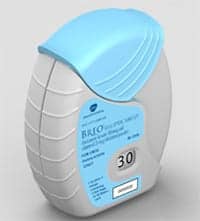Transpire Bio has tapped Recipharm to support the development of its inhaled respiratory disease drug candidates, including a COPD treatment.
The agreement positions Transpire to tap into Recipharm’s experience of developing and manufacturing inhaled drug products as it seeks to advance its programs toward the clinic.
Miami-based Transpire’s pipeline features a range of treatments for asthma and chronic obstructive pulmonary disease (COPD) based on dry powder, multi dose and soft mist inhaler technologies. All of the candidates are at the formulation and device development stages, with in vitro bioequivalence to follow before Transpire starts pharmacokinetic and pharmacodynamic studies in humans.
Transpire has brought Recipharm on board to help with the development of two of its asthma and COPD candidates, TRB-1 and TRB-2. Read more here.
Lung Scraping for COPD
Lung scraping, or thoracentesis, involves the removal of fluid or air from the space between the chest wall and the lungs. In some cases, doctors may perform the procedure on people who have chronic obstructive pulmonary disease (COPD).
It is not a standard treatment for COPD, but it may be necessary if a person has pleural effusion or empyema.
This article looks at COPD and lung scraping in more detail. It explains who may need the procedure and discusses the risks, preparation, and aftercare. It also outlines other procedures for COPD.
Therapeutic thoracentesis helps decrease the shortness of breath and pain that result from the pressure of the fluid on the lungs. It typically involves the removal of a large volume of fluid. It is not unusual for a healthcare professional to remove multiple liters of fluid.
Diagnostic thoracentesis helps doctors determine the cause of pleural effusion, which is a buildup of fluid in the pleural space. Healthcare professionals remove less fluid during diagnostic thoracentesis. Read more here.
COPD Awareness
According to the Centers for Disease Control (CDC), COPD affects at least 16 million people in the United States. They suggest that many more people may have the condition but have not yet received a diagnosis or treatment.
Cigarette smoke is the most common cause of COPD. People may also develop COPD from exposure to other harmful substances, such as pollution and workplace chemicals. This means it is a preventable disease. Lifestyle changes, such as quitting smoking, may also slow COPD progression.
COPD awareness helps people understand the risks of smoking and chemical exposure. It may help people with symptoms to seek treatment earlier and could even improve a person’s life expectancy. Read more here.









